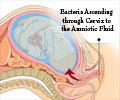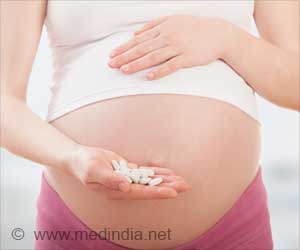Administration of antibiotic azithromycin alongside the standard antibiotic regimen reduces infection rates by 50 percent for women who have a Cesarean delivery.
- The rates of Cesarean delivery are on the rise
- One in 10 women is at risk of C-section scar infection
- Expectant mothers who undergo C-section are often given a standard antibiotic regimen to reduce infection
- Administration of an antibiotic azithromycin plus a standard antibiotic regimen during Cesarean delivery can lower rate of post-delivery infections by 50%

Antibiotic Azithromycin Reduces Risk of C-section Incision Infection and Endometritis
A randomized clinical trial was conducted across 14 hospitals in the United States. The trial included 2,013 women who were more than 24 weeks’ gestation and undergoing a C-section during labor or after membrane rupture.
The study participants were randomly divided into two groups. One group received the standard antibiotic regimen to prevent infection. The other group received a modified regimen with the additional antibiotic azithromycin. The data gathered from the 14 hospitals were analyzed by the UAB Department of Biostatistics. The results showed that the rates of endometritis (infection of the lining of the uterus) and infection of the cesarean incision reduced by 50% in women who received azithromycin and cefazolin, compared to women who received only the standard single antibiotic. Babies born to women who received additional azithromycin did not have an increased risk of adverse events. The researchers also found that the rates of hospital readmission, unscheduled clinic visit, and visit to the emergency room were reduced in the group that received azithromycin.
“When our group first developed the idea that a second antibiotic could help reduce infections for these women, we found reassurance in the fact that some patients who have preterm premature rupture of the membranes receive two antibiotics to help reduce infection and prolong pregnancy,” said Tita.
Jeff Szychowski, Ph.D., associate professor in the UAB School of Public Health Department of Biostatistics, said, “The benefits associated with the additional antibiotic azithromycin are consistent across several subgroups of patients. Thanks to the dedication of research staff across the consortium of 14 centers to successfully execute a clinical trial of this magnitude, we are poised to perform multiple follow-up investigations and to understand the ramifications of these results more completely.”
Dr Uma Reddy, the NICHD project officer for the study, said, “These results are crucial, given that the maternal death rate has increased in the US and there is an urgent need for therapies to decrease serious complications that can lead to maternal deaths.”
The trial was funded by the Eunice Kennedy Shriver National Institute of Child Health and Human Development. The antibiotic azithromycin was donated by Pfizer. The study is published in the New England Journal of Medicine.
Cesarean Delivery
C-section is a surgical procedure to deliver a baby. The baby is taken out through an incision in the mother's abdomen. A C-section is planned when the pregnant woman develops complications. About 3 to 6 percent of women who have undergone a C-section are vulnerable to infections. C-section infection can occur due to lack of hygiene. Obese and overweight women are at high risk of getting C-section wound infected. Women who had pregnancy complications such as gestational diabetes, high blood pressure, and autoimmune disease are also at high risk for infection.
Signs of C-section Infection
- Swelling or redness at wound site
- Fever rises to more than 100.4°F (38°C)
- Abdominal pain and discomfort
- Vaginal discharge
- Take rest when possible
- Avoid lifting anything heavier
- Drink plenty of fluids
- Maintain good posture while walking and standing
- Keep the wound site clean and dry
- Hold your abdomen during coughing and sneezing
- C-section recovery: What to expect - (http://www.mayoclinic.org/healthy-lifestyle/labor-and-delivery/in-depth/c-section-recovery/art-20047310?pg=1)
















